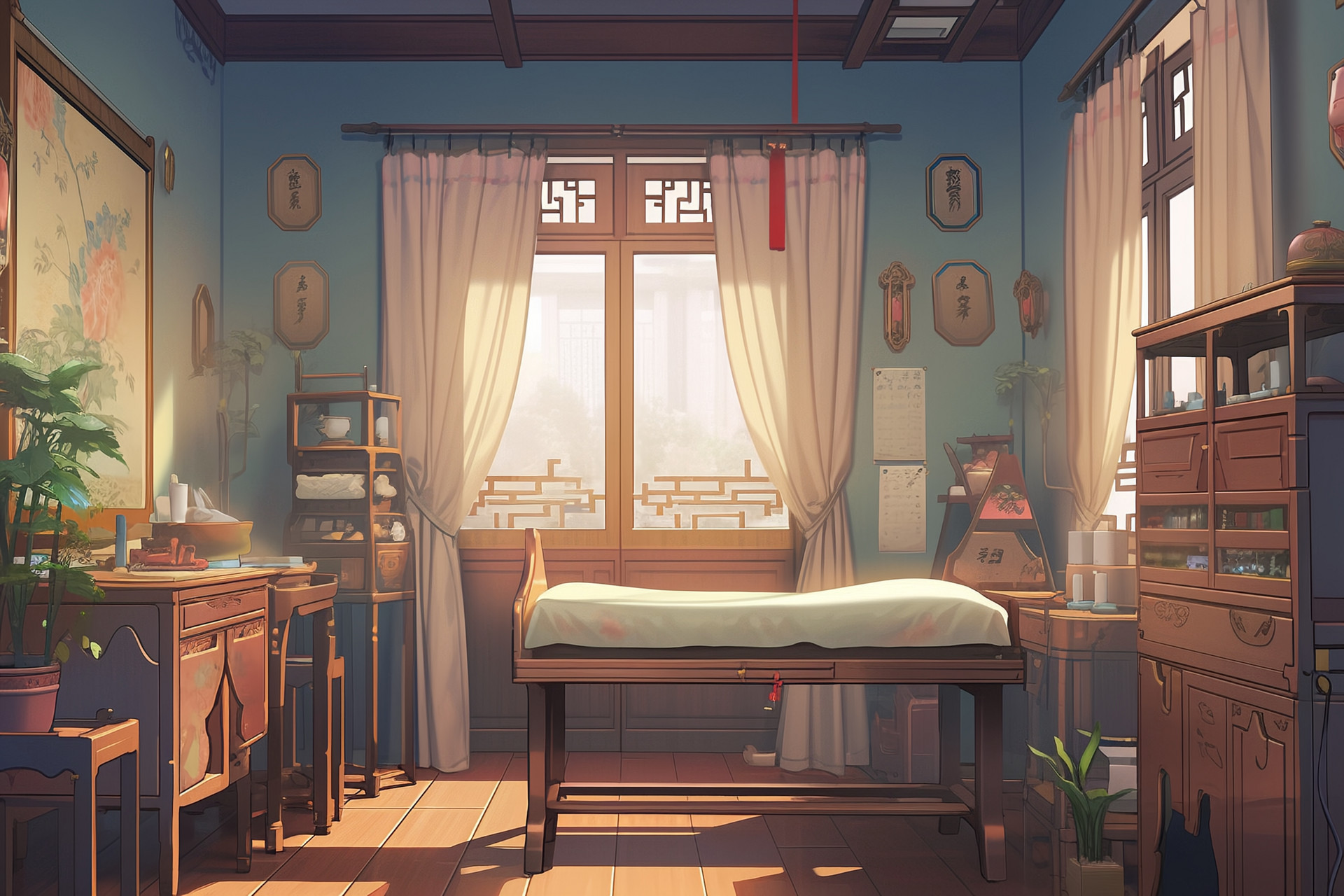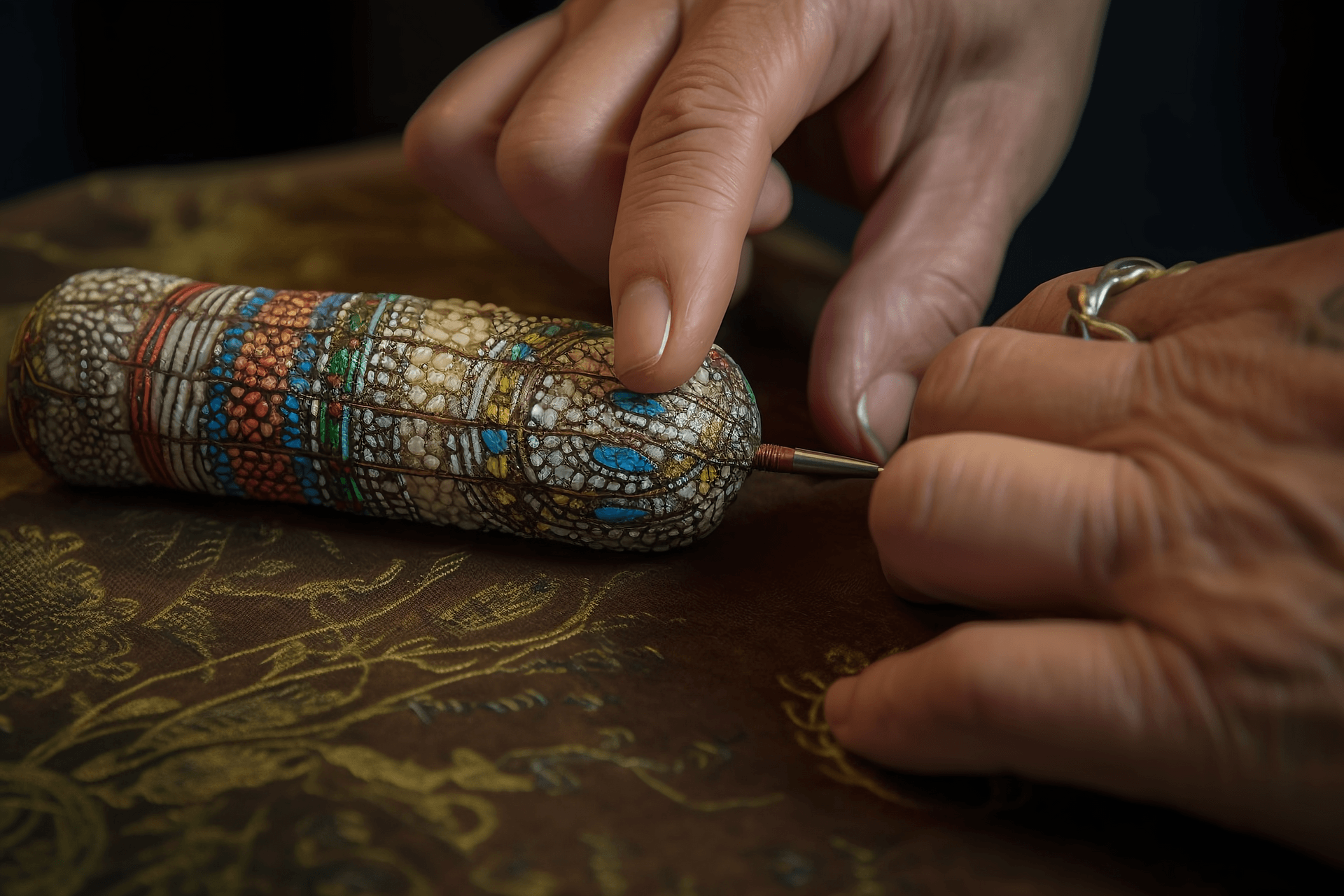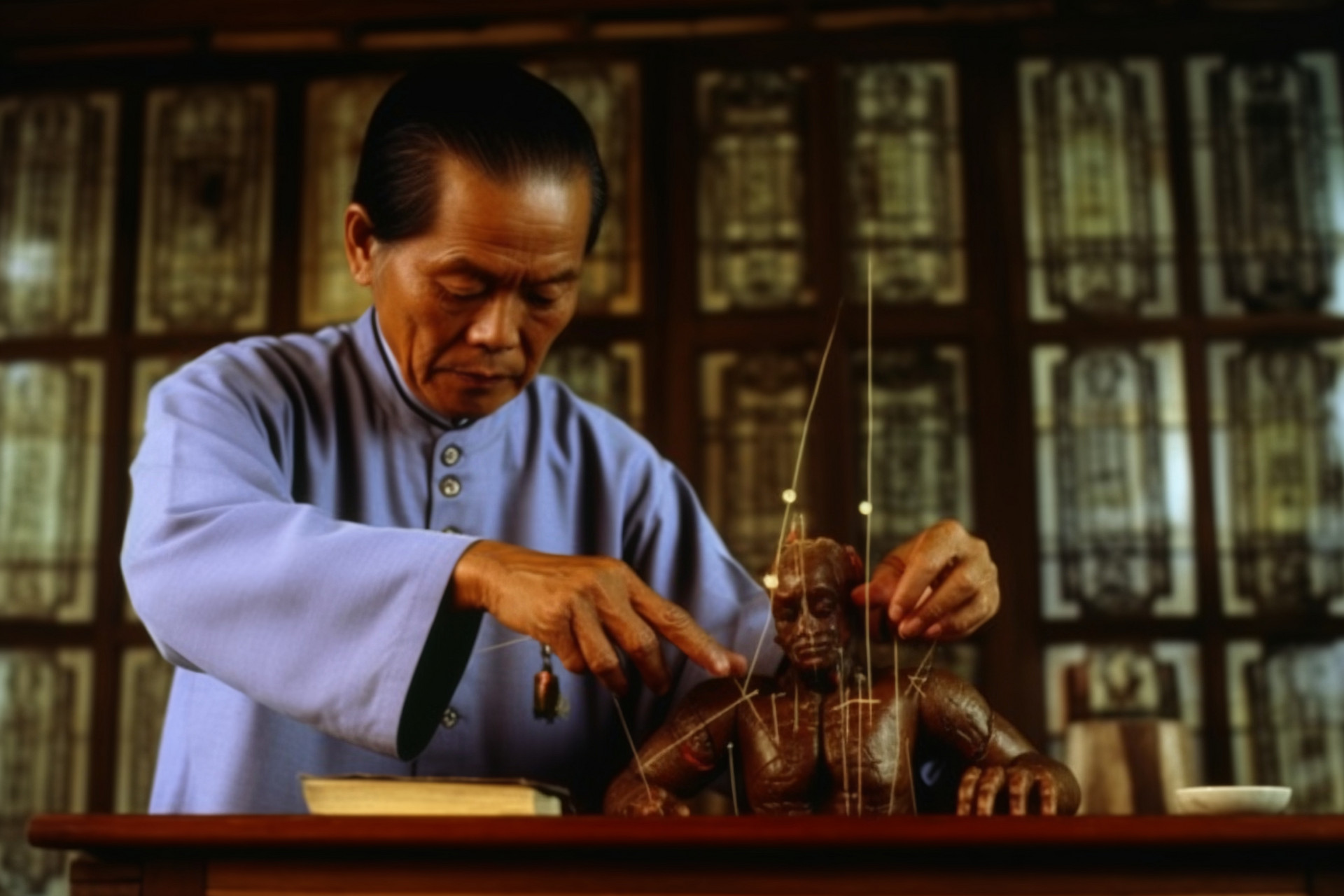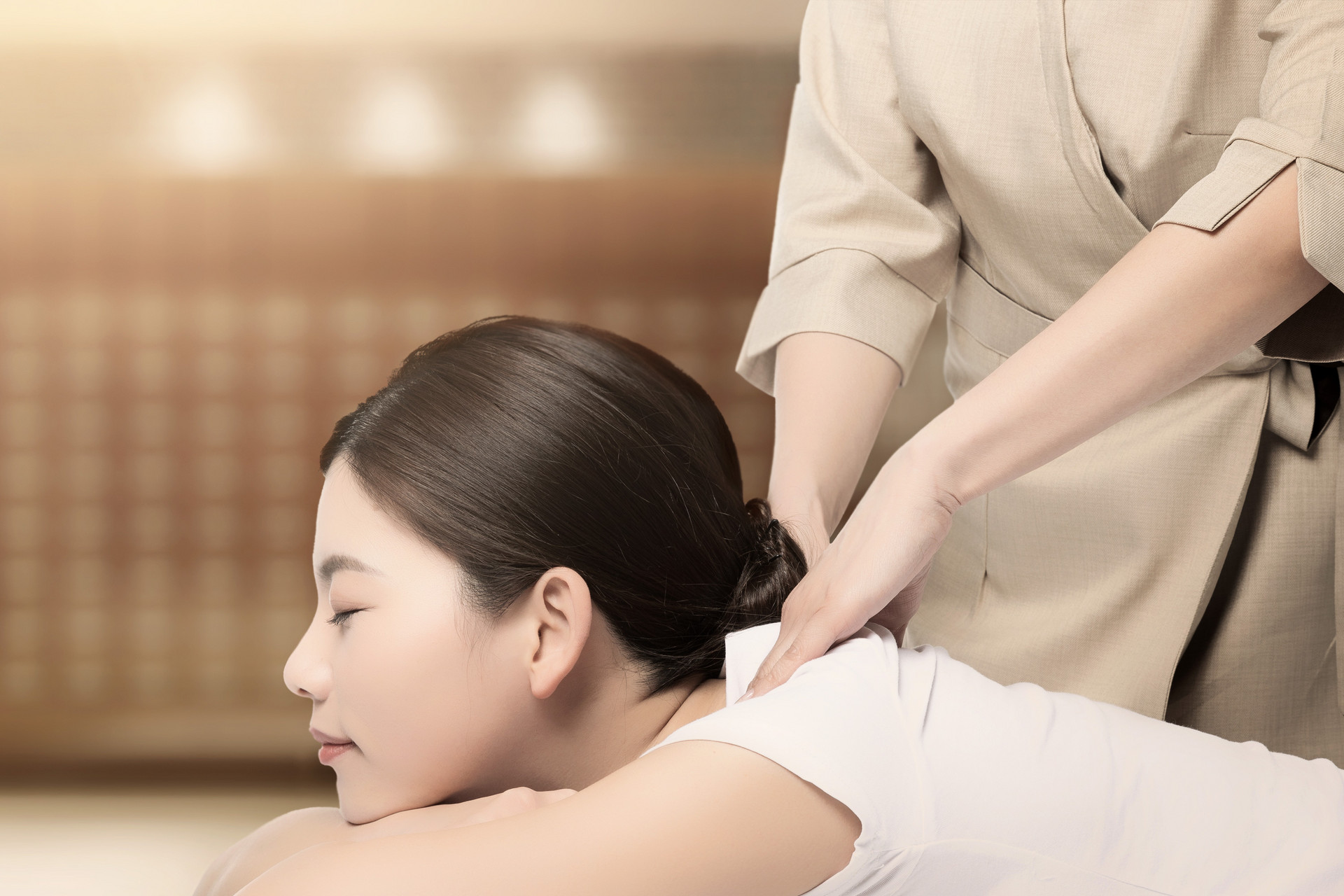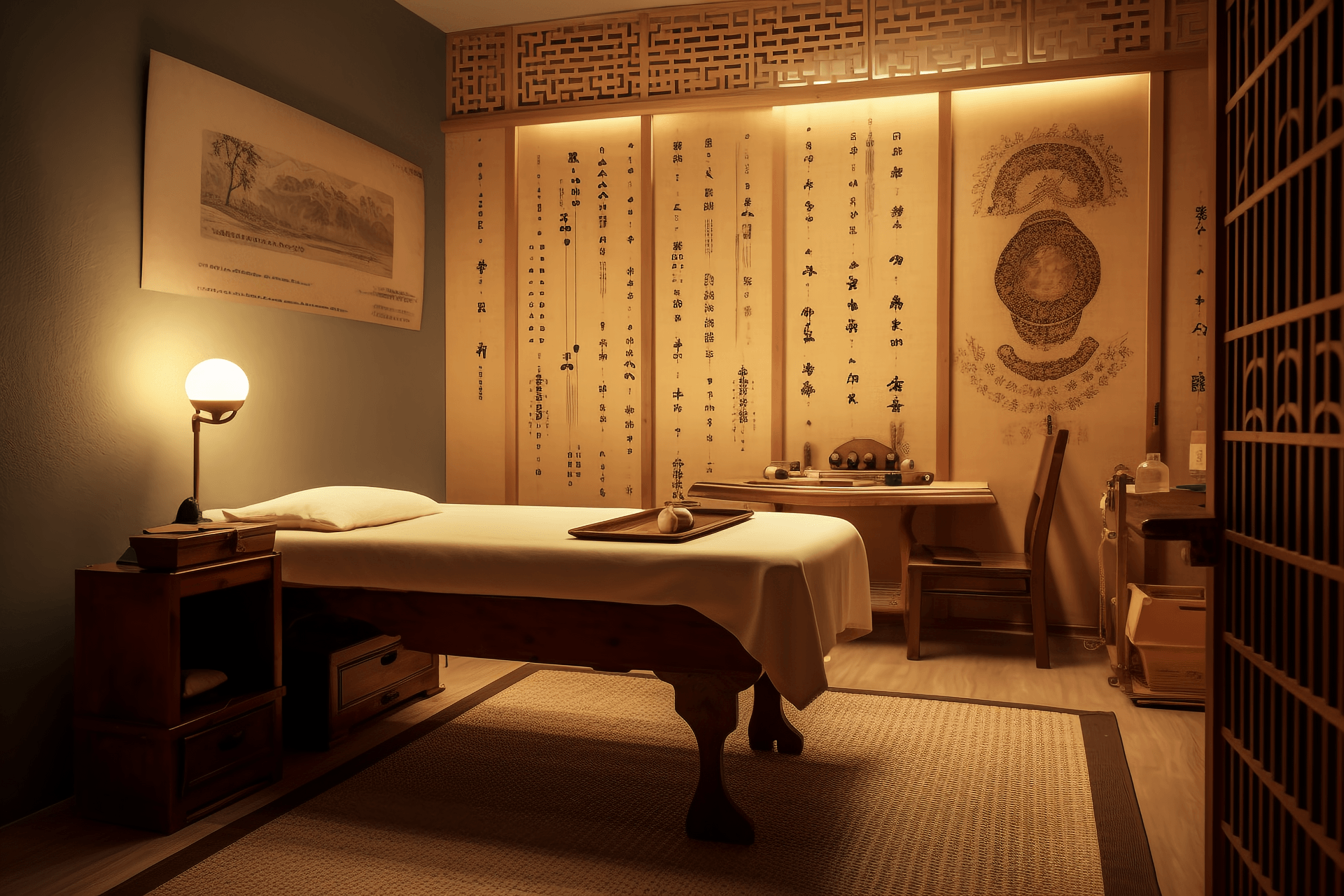Skin needle therapy is a type of needling method that involves shallow needling of certain parts (acupoints) of the body with multiple short needles. It is a development of ancient Chinese needling techniques such as "half needling," "floating needling," and "hair needling." In the Ling Shu • Guan Zhen, it is described as follows: "Half needling is to quickly insert the needle shallowly without injuring the flesh, similar to pulling out hair." "Floating needling is to insert the needle obliquely to treat urgent and cold conditions of the muscles." "Hair needling is to needle the superficial bi syndrome of the skin." Skin needling can promote the circulation of meridians, harmonize qi and blood, and help the body restore its normal functions, thereby achieving the goal of preventing and treating diseases.
[Operational Method]
1. Needle Tools
There are two types of skin needles: plum blossom needles and roller skin needles. Plum blossom needles are more commonly used in clinical practice.
1. Plum Blossom Needle: The plum blossom needle consists of a needle bundle, needle tips, and a handle. The handle is the part held in the hand and is made of elastic materials such as plastic or rubber wood. It is about 28-30 cm long. The needle tip is the part where the needle bundle is embedded. The needle bundle consists of 5-7 stainless steel needles embedded in the needle tip, with the needle tip exposed 0.2 cm.
2. Roller Skin Needle: This type of skin needle has a cylindrical shape and is made of metal. It is fixed with several rows of short needles on the cylinder, with the needle tip exposed 0.2 cm. It has a handle.
2. Operation
1. When using the plum blossom needle, the practitioner holds the handle of the needle with the back end in hand, and the index finger presses on the middle part of the handle. The needle is then tapped vertically on the skin that has been properly disinfected using the wrist's force. After tapping, the needle is immediately lifted and the process is repeated. The tapping can be done along the meridians or at relevant acupoints, or on both sides of the patient's spine or affected area. The tapping strength can be light or heavy. Light tapping should be gentle enough to make the local skin become slightly red and congested, while heavy tapping should be stronger to cause slight bleeding of the skin.
2. When using the roller skin needle, the practitioner holds the middle part of the handle with the thumb and index finger, and the other three fingers hold the end of the handle. The needle is then rolled and pushed against the skin in a certain area.
[Indications]
1. Neuralgia, neurodermatitis, drug-induced dermatitis, urticaria, eczema
Use the plum blossom needle technique. For flat lesions with a large area, the roller skin needle technique, light tapping, or heavy tapping can be used. Choose positive objects on both sides of the spine (such as nodules or cord-like structures) or the affected area and the surrounding skin, and combine with acupoints such as Fengchi (GB 20), Dazhui (GV 14), Quchi (LI 11), Xuehai (SP 10), and Sanyinjiao (SP 6).
2. Myopia, hyperopia, chalazion, acute conjunctivitis, convergent strabismus, paralytic strabismus
Use the plum blossom needle technique, light tapping. Choose positive objects on both sides of the spine (for chalazion, heavy tapping is done on the millet-sized, slightly raised, pale red papules in the scapular area) and combine with acupoints such as Dazhui (GV 14), Fengchi (GB 20), Baihui (GV 20), Taiyang (EX-HN 5), Zanzhu (BL 2), Sibai (ST 2), Neiguan (PC 6), Guangming (GB 37), Xinshu (BL 15), Ganshu (BL 18), Pishu (BL 20), and Shenshu (BL 23).
3. Neurosensory hearing loss, allergic rhinitis, acute tonsillitis
Use the plum blossom needle technique, light tapping. Choose positive objects on both sides of the spine, and combine with acupoints such as Yifeng (TE 17), Tinggong (SI 19), Fengchi (GB 20), Baihui (GV 20), Waiguan (SJ 5), Ganmen (BL 18), and Danzhong (CV 17) for hearing loss; Feishu (BL 13), Fengchi (GB 20), and Yingxiang (LI 20) for rhinitis; Dazhui (GV 14), Feishu (BL 13), Xiaochangshu (BL 27), and Hegu (LI 4) for acute tonsillitis.
4. Headache
Use the plum blossom needle technique, light tapping. Choose positive objects on both sides of the spine, and combine with acupoints such as Dazhui (GV 14), Fengchi (GB 20), Taiyang (EX-HN 5), Dayuji (EX-HN 7), Xiaoyuji (EX-HN 8), Qianting (EX-HN 7), Hegu (LI 4), Baihui (GV 20), Shentang (GV 24), Yintang (EX-HN 3), Ganmen (BL 18), Pishu (BL 20), and Zhiyin (BL 67) for different types of headaches.
5. Intercostal neuralgia
Use the plum blossom needle technique. Light tapping on the intercostal spaces and the affected area, and heavy tapping on positive objects on both sides of the spine.
6. Common cold, chronic bronchitis
Use the plum blossom needle technique. Light tapping on Dazhui (GV 14), Fengmen (BL 12), Feishu (BL 13), Fengchi (GB 20), Waiguan (SJ 5), and Hegu (LI 4), and heavy tapping on positive objects on both sides of the spine.
7. Acute gastritis, functional dyspepsia, diaphragmatic spasm
Use the plum blossom needle technique. Light tapping on Weishu (BL 21), Jihui (GV 20), Zhongwan (CV 12), Neiguan (PC 6), and Zusanli (ST 36), and heavy tapping on positive objects on both sides of the spine.
[Precautions]
1. Pay attention to inspecting the needle tools. If the needle tips have hooks or defects, or if the needle edges are uneven, they should be repaired in a timely manner.
2. Both the needle tools and the skin to be needled should be disinfected. After heavy tapping, the local skin should be disinfected with an alcohol cotton ball, and attention should be paid to keeping the needled area clean to prevent infection.
3. Skin needling therapy should not be used on local skin with wounds or ulcers.




